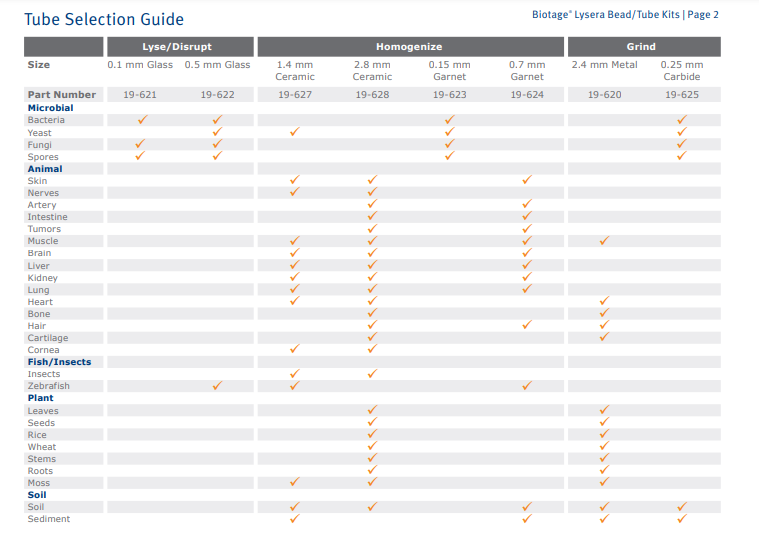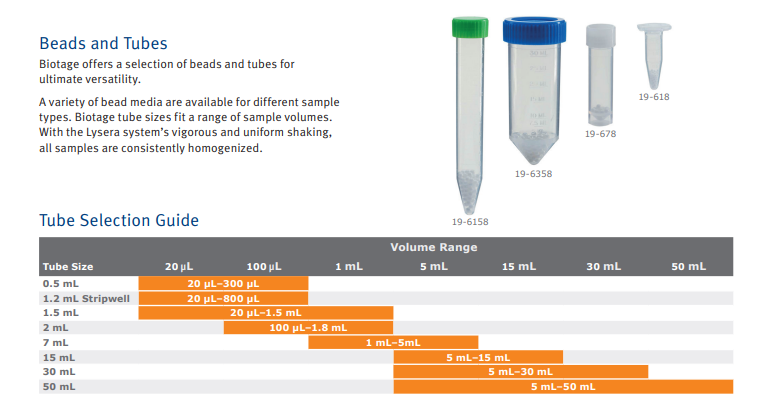If you are working in the food and agriculture industry, then you are very familiar with the fact that if you need to process a solid sample, you need to make sure that the sample is homogenized. There are a couple of different techniques that you can consider, but which technique is best for the sample you are working with?
Well, let’s start with our first option: a blender
/Blogs%20ONLY/bigstock-Blender-Practical-Modern-Appl-454073513%20cropped-Dec-12-2022-01-04-16-2014-PM.jpg?width=117&height=207&name=bigstock-Blender-Practical-Modern-Appl-454073513%20cropped-Dec-12-2022-01-04-16-2014-PM.jpg) I think it is safe to say that we all know what a blender is. Most likely we have seen or used them in our own kitchens to make a protein shake, applesauce, tomato sauce, or possibly salsa. These work great for some samples like the ones I just mentioned, but they can be less efficient, and it is quite challenging to completely homogenize samples, especially with various viscosities. For Example, have you ever have had to blend something in the kitchen and the contents sort of “clump” at the bottom of the blender beneath the blades, making it impossible to break up the particles any further? This is also a common issue with laboratory blenders, making it nearly impossible to achieve the consistency you are looking for. This is where our second option will come into play.
I think it is safe to say that we all know what a blender is. Most likely we have seen or used them in our own kitchens to make a protein shake, applesauce, tomato sauce, or possibly salsa. These work great for some samples like the ones I just mentioned, but they can be less efficient, and it is quite challenging to completely homogenize samples, especially with various viscosities. For Example, have you ever have had to blend something in the kitchen and the contents sort of “clump” at the bottom of the blender beneath the blades, making it impossible to break up the particles any further? This is also a common issue with laboratory blenders, making it nearly impossible to achieve the consistency you are looking for. This is where our second option will come into play.
Option two: a bead mill
/Blogs%20ONLY/Biotage%20Lysera%20white%20bg.png?width=241&height=172&name=Biotage%20Lysera%20white%20bg.png) Now if you are new to the food and agriculture industry, then you may be asking yourself, “what is a bead mill exactly and how is it any different from a blender”? Isn’t a bead mill just a fancy blender? Well, the answer is somewhat of a yes, but it is so much more than that. Have you ever heard of a grain mill? A grain mill is used specifically for wheat or any other grain that you want to turn into flour.
Now if you are new to the food and agriculture industry, then you may be asking yourself, “what is a bead mill exactly and how is it any different from a blender”? Isn’t a bead mill just a fancy blender? Well, the answer is somewhat of a yes, but it is so much more than that. Have you ever heard of a grain mill? A grain mill is used specifically for wheat or any other grain that you want to turn into flour.
Of course, you can use a blender to break apart your wheat or grain of choice, but it will be chunky, and the pieces will be uneven in size. No matter how fancy or quick the blender is, you won’t’ be able to homogenize material to an even consistency. Like flour, we all know it is milled to a uniform consistency so fine that it feels like, well, flour instead of sand!
Now that we have two different options, which one should you be using? Well, that is totally up to you and the requirements for the application you are performing or evaluating. For example, if you are in a food and agriculture lab and you are looking to homogenize some plant materials, all-in-all the best way to do that would be with ceramic beads in a bead mill. The beads will transform the material into a consistency you need, whether that is small pieces or a fine powder, using a bead mill homogenizer will get your sample ready for your assay. If you are looking to homogenize microbial material, then you may want to use glass beads instead! The Biotage® Lysera can handle all sorts of different samples in conjunction with all sorts of different beads. Feel free to look at the table below for all the different types of matrices you can homogenizations with the Biotage® Lysera bead mill.

We can use a bead mill for plant materials, microbes, tissues, soils, etc., but what if you have too much sample that it doesn’t fit in the tube that is provided with the beads? If that is the case, then you will need to look into a blender for homogenization. Blenders have a much higher capacity allowing for larger sample volumes and should accomplish homogenization well enough to do your analysis, so long as you have a powerful blender. If you really don’t want to use a blender, feel free to look at the table below with the sample volume ranges that are available with a typical bead mill homogenization kit. If you can test a smaller sample size, then you may be able to use a bead mill instead of a blender.

Whether you are using a blender or a bead mill, the concept is the same; both chop up your product of interest into tiny pieces to work on getting it homogenized together. The difference is how fine the pieces or particles will be. If you are looking for extra, super fine and you have a small enough sample to analyze, the bead mill is the way to go. If it isn’t as important or if you have very large sample volumes, then you could probably get away with a good ole’ blender! In many cases you may find yourself requiring both a blender and a bead mill, so no matter what the sample type or size, you have the tool you need for the job!
For more information, click the link below.

